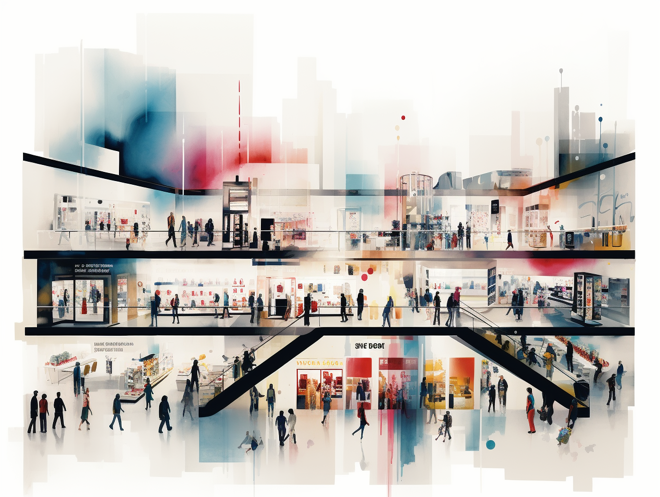Advertisement
Advertisement
US Retail Sales Plummet in January, Defying Analyst Expectations
By:
January retail sales dropped 0.8%, defying forecasts; Citi's 0.6% estimate closest. Consumer spending shifts hint at trends.
Key Points
- January retail sales drop 0.8%, contrary to forecasted 0.2% decline.
- Analyst predictions miss mark; Citi closest with anticipated 0.6% decrease.
- Nonstore retailers see 6.4% rise, signaling changing consumer habits.
US Retail Sales Diverge from Forecasts
January’s US retail sales have taken an unexpected turn, sharply deviating from analysts’ forecasts and presenting a significant downturn compared to expectations.
Forecasts vs. Actuals
In January, retail and food services sales saw a notable decrease of 0.8%, contrasting starkly with the anticipated slight contraction of 0.2%.
Analysts, including major institutions like Deutsche Bank and ABN Amro, had forecasted modest growths, with expectations ranging from 0.2% to 0.3%.
However, the actual figures fell well below these estimates, catching many by surprise.
Notably, only Citi’s estimate of a 0.6% decline came close to reflecting the true outcome, highlighting the challenge of accurately predicting market movements.
Market Trends
The substantial decline in January’s retail sales suggests a more cautious outlook on consumer spending. This trend is underpinned by factors such as high borrowing costs and potential shifts in the labor market, which may be influencing consumer behavior.
However, amidst this downturn, there are notable shifts in consumer spending patterns. For instance, nonstore retailers saw a significant increase of 6.4% compared to the previous year, indicating a growing preference for online shopping channels.
Similarly, food services and drinking places also experienced a rise, suggesting that consumers are still willing to spend on dining out despite overall economic uncertainties.
These shifts in spending habits may have varying impacts on different sectors within the retail landscape, with some businesses benefiting from changing consumer preferences while others face challenges in adapting to evolving market conditions.
Consumer Spending Shifts
The increase in nonstore retailers by 6.4% compared to last year indicates a notable shift in consumer behavior, likely influenced by changing preferences and technological advancements. This trend reflects a broader shift towards e-commerce and digital shopping platforms, driven by convenience and accessibility. Additionally, the rise in food services and drinking places further underscores this trend, highlighting evolving patterns in spending habits. Despite the overall decline in retail sales, these sectors continue to attract consumer spending, indicating resilience in certain segments of the economy.
Short-Term Market Forecast
Given the unexpected downturn in January’s retail sales and the evolving consumer behavior, the short-term market forecast indicates a likelihood of continued moderation in retail sales growth. The move towards nonstore retailing and the sustained interest in food services suggest a potential reorientation of consumer expenditure, which could lead to uneven impacts across various retail sectors. This scenario warrants a cautious approach in assessing future retail sales performance, as businesses navigate through changing market conditions and consumer preferences.
About the Author
James Hyerczykauthor
James Hyerczyk is a U.S. based seasoned technical analyst and educator with over 40 years of experience in market analysis and trading, specializing in chart patterns and price movement. He is the author of two books on technical analysis and has a background in both futures and stock markets.
Advertisement
